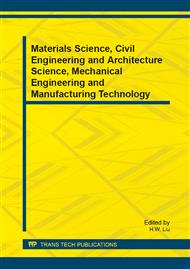p.66
p.70
p.74
p.79
p.83
p.90
p.94
p.98
p.102
Effects of Heat Source Model and Welding Speed on Welding Temperature Field for a Plan Carbon Steel Plant
Abstract:
This article studies the effects of heat source shape parameter and welding speed on the evolution of welding temperature field for Q345 plan carbon steel. The heat input and heat source parameters as well as the welding speed are defined by applying DFLUX subroutine in ABAQUS to simulate the transient welding temperature. The effects of heat resource shape parameters and heat input as well as the welding speed on welding temperature field are investigated by means of finite element analysis. It has been found that heat source parameters and welding speed show strong influence on temperature distribution in FZ (fusion zone) and HAZ (heat-affected zone). Meanwhile, it shows a roughly linear relationship between the changes of heat input and the highest temperature.
Info:
Periodical:
Pages:
83-89
Citation:
Online since:
January 2014
Price:
Сopyright:
© 2014 Trans Tech Publications Ltd. All Rights Reserved
Share:
Citation:


